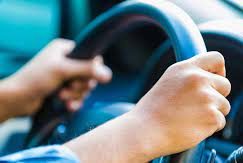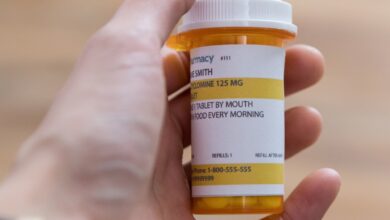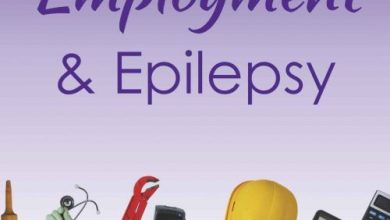
Did you just realize that you took extra of your epilepsy medicine by accident? It’s actually quite common and can happen easily. Living with epilepsy requires careful management, including adhering to prescribed seizure medications.
Most of the time, taking your seizure medicine twice is not a huge problem. However, for certain medicines and some people, it might be more serious. Let’s go through what you should do if you accidentally took your seizure medicine twice.
1. Stay Calm
First and foremost, it’s crucial to remain calm. Accidentally taking your seizure medication twice does not necessarily mean an immediate cause for alarm. Panicking can increase stress levels, which might exacerbate the situation. Remember that many people take double doses of medications accidentally, and there are ways to handle this situation effectively.
2. Identify the Medication
Identify the specific seizure medication you’ve taken twice. Each medication has its own guidelines and potential side effects. Understanding which medication you’ve taken can help you assess the severity of the situation and determine your next steps.
3. Check the Dosage
Review the dosage instructions on the medication label or packaging. Compare the recommended dosage with the total amount you’ve taken. This information will help you understand if you’ve significantly exceeded the recommended dose.
4. Reach Out to a Medical Professional
If you’re unsure about the potential effects of taking a double dose of your seizure medication, it’s best to contact a medical professional promptly. You can call your healthcare provider, primary care physician, or a pharmacist for guidance. They will be able to provide personalized advice based on your medical history and the specific medication you’re taking.
5. Do Not Induce Vomiting
In the case of accidentally taking a double dose of seizure medication, inducing vomiting is generally not recommended. Some medications can be absorbed into the bloodstream very quickly, and inducing vomiting might not effectively remove the excess medication from your system.
6. Monitor for Symptoms
While waiting for medical guidance, monitor yourself for any unusual symptoms or side effects. These may include dizziness, drowsiness, confusion, difficulty breathing, rapid heart rate, or nausea. If you experience severe symptoms, seek medical attention immediately.
7. Hydration and Rest
In some cases, a double dose of seizure medication might lead to drowsiness or fatigue. Stay hydrated and allow yourself to rest if needed. Avoid activities that require alertness until you’re sure about the potential effects of the double dose.
8. Call Your Doctor, Treatment Team, or Pharmacist
The first thing to do is to get in touch with your doctor, the healthcare team managing your treatment, or your pharmacist. They are experts who can give you the best advice tailored to your situation. They’ll ask about the specific medicine you took and its dosage. This information helps them understand how concerned you should be.
9. Follow Medical Advice
Once you’ve contacted a medical professional, follow their advice closely. They might recommend specific actions based on the medication you’re taking, your medical history, and the severity of the double dose. This could include adjusting subsequent doses, monitoring your symptoms, or seeking further medical evaluation.
10. Symptoms of Seizure Medication Overdose
- Dizziness and Lightheadedness: Feeling unusually dizzy or lightheaded could be a sign that you’ve taken more medication than your body can handle at once.
- Extreme Drowsiness: Experiencing severe drowsiness or feeling excessively sleepy even when you’re supposed to be awake might be indicative of an overdose.
- Confusion: Difficulty thinking clearly, being easily confused, or having trouble focusing are potential signs that your medication level might be too high.
- Nausea and Vomiting: Feeling nauseous or vomiting could be your body’s response to an overdose, as it tries to expel the excess medication.
- Rapid Heartbeat: A noticeably faster heart rate or heart palpitations might be a reaction to an excessive dose of medication.
- Shakiness or Tremors: Uncontrolled shaking or trembling, especially in your hands or limbs, could indicate that your body is reacting to too much medication.
- Blurred Vision: Experiencing blurred or distorted vision could be related to an overdose of your seizure medication.
- Difficulty Breathing: If you find it hard to breathe or experience shortness of breath, it could be a serious symptom of an overdose.
- Unusual Mood Changes: Sudden mood swings, irritability, or feeling overly anxious could be linked to taking too much medication.
- Seizures or Convulsions: Paradoxically, an overdose might lead to an increase in seizure activity, even though the medication is intended to prevent seizures.
11. Prevention for the Future
To avoid accidental double doses in the future, consider implementing the following preventive measures:
– Use a pill organizer: Organize your medications in a weekly pill organizer to help you keep track of your daily doses.
– Set reminders: Use alarms, mobile apps, or medication reminder services to ensure you take your medication at the right time.
– Inform caregivers: If you have caregivers or family members assisting you with your medication, ensure they are aware of your medication schedule.
Final Thoughts:
Accidentally taking your seizure medication twice can be concerning, but with the right steps, you can effectively manage the situation. Staying calm, reaching out to medical professionals, monitoring your symptoms, and following their advice are crucial aspects of handling this scenario. Remember, open communication with your healthcare provider and implementing preventive measures can significantly reduce the chances of such accidents in the future.




